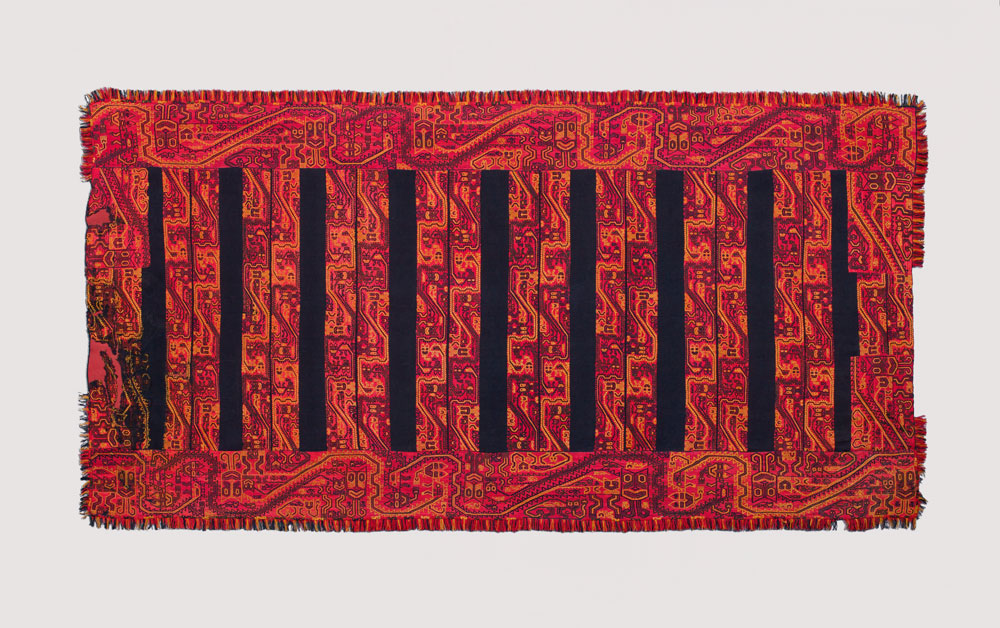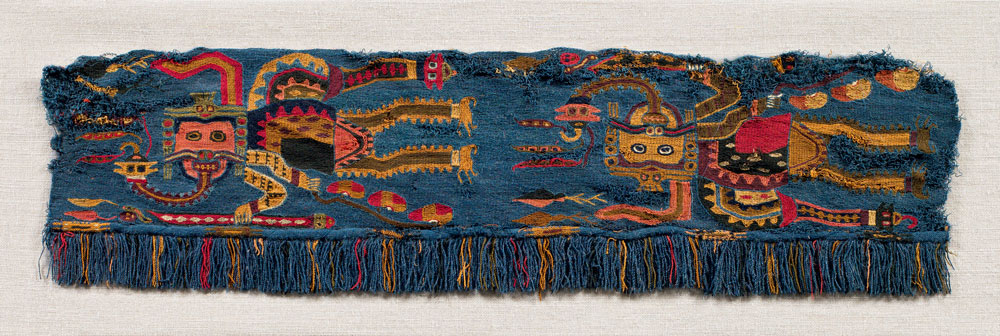‘Balance and Opposition in Ancient Peruvian Textiles’
Deborah Spivak reports on ‘Balance and Opposition in Ancient Peruvian Textiles’, a current exhibition of works from the St Louis Art Museum’s impressive collection of Andean textiles that have never before been displayed as a group, in HALI 197—out soon. On view until 25 November, the exhibition illustrates the pervasive concept of duality in ancient Peruvian cultures. An abridged extract from Spivak’s article follows:
‘In ancient Peru, finely-woven textiles were considered more valuable than gold or silver, holding the utmost importance in displays of political power, ethnic distinction, and religious events. The intrinsic value of woven cloth stemmed, in part, from its formation out of the productive tension of the warp and weft. As such, textiles served as metaphors for the necessary balance of opposing elements that pervaded all aspects of the ancient Peruvian worldview.
Lightweight spindles and small ceramic spindle whorls were used to spin cotton and camelid fibre into extremely fine threads. Examples of fine camelid threads are notable on embroidered Paracas textiles. One fragment in particular, approximately 2,000 years old (above), uses eleven distinct colours of camelid fibre to depict an anthropomorphic composite creature soaring across a vibrant indigo background.’


























Comments [0] Sign in to comment